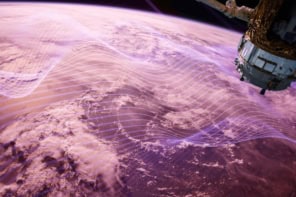
Researchers in the US have estimated that modification of stratospheric albedo – a widely discussed geoengineering technique to counteract some of the effects of climate change – could cost as little as $5bn a year. Although this is just a small fraction of the gross domestic product (GDP) of most western countries, the team stresses that there are many potential risks of geoengineering the planet in this way.
Geoengineering aims to mitigate man-made climate change by making large-scale modifications to the Earth’s surface or atmosphere. One of the main proposals discussed by scientists is stratospheric albedo modification: changing the reflective power of the atmosphere 10–50 km above the Earth’s surface so that more solar radiation is reflected back into space. Such a modification would be achieved by pumping tiny particles known as aerosols into the upper atmosphere.
Price on pumping
Now, technology and policy expert Jay Apt of Carnegie Mellon University in the US and colleagues have put a price on such aerosol pumping. Using statistical methods, they estimated the cost for various systems of delivering between one and five million tonnes of particles such as sulphur compounds to altitudes of 18–30 km. These systems included the use of existing aircraft, the procurement of new aircraft or airships, the procurement of rockets and guns, and suspended gas pipes.
Apt’s group found that the basic technology exists today to deliver enough aerosols into the stratosphere to offset the man-made warming expected over the next 50 years. In fact, several of the systems under consideration could perform the feat for less than $5bn a year – just 0.03% of US GDP.
Some of the cheapest systems would involve airships, the researchers found, although the development cost and high-altitude performance of these is uncertain. Gas pipes would offer low recurring costs, although their development cost would be high and they would need to demonstrate very high tensile strength. Rocket and gun systems, according to the calculations, would be the most expensive.
Environmental and political risks remain
Apt’s group is quick to point out that the estimated costs should not be seen as a green flag for stratospheric albedo modification, since the researchers have considered neither its potential environmental risks nor its political or moral strains. Their study “simply means that an attribute of [albedo modification] is that it is comparatively inexpensive”, they say.
Indeed, scientists and policy experts have uncovered many disadvantages of stratospheric albedo modification. One problem is that different regions of the world might need different amounts of modification, since global warming is not expected to occur evenly. Another issue is that altering albedo could affect other aspects of the climate, such as rainfall. In fact, some climate models suggest that albedo modification could hasten the droughts that climate change is expected to induce.
Worst, however, is the knowledge that, once begun, albedo modification must be maintained indefinitely. “Abrupt stopping of the delivery of particles to the stratosphere would cause very rapid climate changes,” says Apt.
The research is published in Environmental Research Letters.



